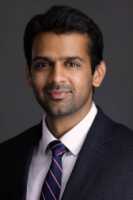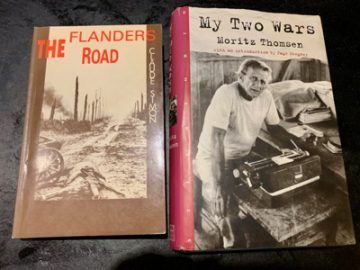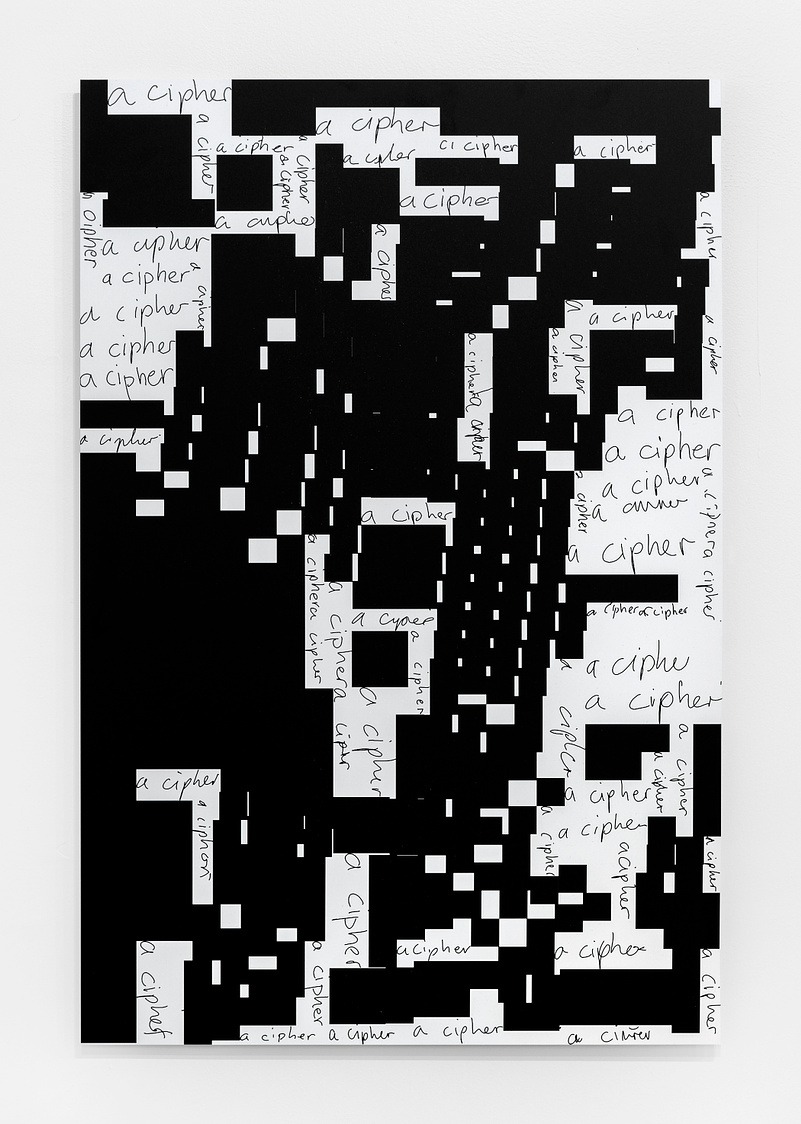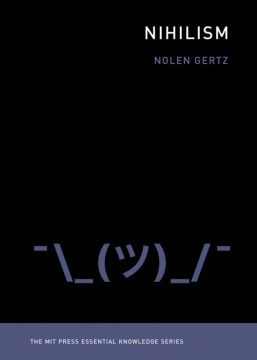
How 10 Famous Artists Would Plate Thanksgiving Dinner


Sean Carroll in Preposterous Universe:
 An infinite number of things happen; we bring structure and meaning to the world by making art and telling stories about it. Every work of literature created by human beings comes out of an historical and cultural context, and drawing connections between art and its context can be illuminating for both. Today’s guest, Stephen Greenblatt, is one of the world’s most celebrated literary scholars, famous for helping to establish the New Historicism school of criticism, which he also refers to as “cultural poetics.” We talk about how art becomes entangled with the politics of its day, and how we can learn about ourselves and other cultures by engaging with stories and their milieu.
An infinite number of things happen; we bring structure and meaning to the world by making art and telling stories about it. Every work of literature created by human beings comes out of an historical and cultural context, and drawing connections between art and its context can be illuminating for both. Today’s guest, Stephen Greenblatt, is one of the world’s most celebrated literary scholars, famous for helping to establish the New Historicism school of criticism, which he also refers to as “cultural poetics.” We talk about how art becomes entangled with the politics of its day, and how we can learn about ourselves and other cultures by engaging with stories and their milieu.
More here.
Ta-Nehisi Coates in the New York Times:
 We are being told of the evils of “cancel culture,” a new scourge that enforces purity, banishes dissent and squelches sober and reasoned debate. But cancel culture is not new. A brief accounting of the illustrious and venerable ranks of blocked and dragged Americans encompasses Sarah Good, Elijah Lovejoy, Ida B. Wells, Dalton Trumbo, Paul Robeson and the Dixie Chicks. What was the Compromise of 1877, which ended Reconstruction, but the cancellation of the black South? What were the detention camps during World War II but the racist muting of Japanese-Americans and their basic rights?
We are being told of the evils of “cancel culture,” a new scourge that enforces purity, banishes dissent and squelches sober and reasoned debate. But cancel culture is not new. A brief accounting of the illustrious and venerable ranks of blocked and dragged Americans encompasses Sarah Good, Elijah Lovejoy, Ida B. Wells, Dalton Trumbo, Paul Robeson and the Dixie Chicks. What was the Compromise of 1877, which ended Reconstruction, but the cancellation of the black South? What were the detention camps during World War II but the racist muting of Japanese-Americans and their basic rights?
Thus any sober assessment of this history must conclude that the present objections to cancel culture are not so much concerned with the weapon, as the kind of people who now seek to wield it.
Until recently, cancellation flowed exclusively downward, from the powerful to the powerless. But now, in this era of fallen gatekeepers, where anyone with a Twitter handle or Facebook account can be a publisher, banishment has been ostensibly democratized. This development has occasioned much consternation. Scarcely a day goes by without America’s college students being reproached for rejecting poorly rendered sushi or spurning the defenders of statutory rape.
More here.
Lili Loofbourow at VQR:
 The male glance is how comedies about women become chick flicks. It’s how discussions of serious movies with female protagonists consign them to the unappealing stable of “strong female characters.” It’s how soap operas and reality television become synonymous with trash. It tricks us into pronouncing mothers intrinsically boring, and it quietly convinces us that female friendships come in two strains: conventional jealousy or the even less appealing non-plot of saccharine love. The third narrative possibility, frenemy-cum-friend, is an only slightly less shallow conversion myth. Who consumes these stories? Who could want to?
The male glance is how comedies about women become chick flicks. It’s how discussions of serious movies with female protagonists consign them to the unappealing stable of “strong female characters.” It’s how soap operas and reality television become synonymous with trash. It tricks us into pronouncing mothers intrinsically boring, and it quietly convinces us that female friendships come in two strains: conventional jealousy or the even less appealing non-plot of saccharine love. The third narrative possibility, frenemy-cum-friend, is an only slightly less shallow conversion myth. Who consumes these stories? Who could want to?
The slope from taxonomy to dismissal is deceptively gentle and ends with a shrug. The danger of the male glance is that it is reasonable. It’s not always or necessarily incorrect. But it is dangerous because it looks and thinks it reads.
more here.
Richard Vinen at Literary Review:
 At the centre of this book is Thatcher’s fall. Moore describes the ‘tragic spectacle of a woman’s greatness overborne by the littleness of men’. He talks of ‘conspiracy’ and ‘witchery’. There is another explanation for Thatcher’s overthrow. She succeeded in the early 1980s when she worked with the grain of the establishment – civil servants as well as Tory politicians. Not all of those who supported her were keen on monetarism, which was why monetary policy became suppler after 1981, but they were exercised by trade union power and relative economic decline. Thatcher brought a galvanising energy to government and she helped the Conservative Party appeal to a new kind of electorate, but the central policies of her government were supported by a broad coalition that extended across and beyond her party. In fact, Thatcher was often more nervous than her colleagues and advisers when it came to specific policies. However, by 1989, her domestic aims had been achieved and Thatcher herself had become a liability rather than an asset. As for ‘conspiracy’, well, politics, Tory politics in particular, is a permanent conspiracy. Few Conservative MPs, however stupid, lazy or drunk, do not entertain the fantasy that they might one day be prime minister. Of course the men who overthrew Thatcher thought about their own careers, but so what?
At the centre of this book is Thatcher’s fall. Moore describes the ‘tragic spectacle of a woman’s greatness overborne by the littleness of men’. He talks of ‘conspiracy’ and ‘witchery’. There is another explanation for Thatcher’s overthrow. She succeeded in the early 1980s when she worked with the grain of the establishment – civil servants as well as Tory politicians. Not all of those who supported her were keen on monetarism, which was why monetary policy became suppler after 1981, but they were exercised by trade union power and relative economic decline. Thatcher brought a galvanising energy to government and she helped the Conservative Party appeal to a new kind of electorate, but the central policies of her government were supported by a broad coalition that extended across and beyond her party. In fact, Thatcher was often more nervous than her colleagues and advisers when it came to specific policies. However, by 1989, her domestic aims had been achieved and Thatcher herself had become a liability rather than an asset. As for ‘conspiracy’, well, politics, Tory politics in particular, is a permanent conspiracy. Few Conservative MPs, however stupid, lazy or drunk, do not entertain the fantasy that they might one day be prime minister. Of course the men who overthrew Thatcher thought about their own careers, but so what?
more here.
Zadie Smith at The New Yorker:
 Pinckney’s emphasis on the interpolation of class and race can make him appear closer to the leftist Afro-Caribbean tradition of race theorists—exemplified by thinkers such as Paul Gilroy and Stuart Hall—who reject mythical or essentialist theories of racism in favor of a concrete economic analysis, in which racial distinctions have been created and maintained primarily for the sake of capitalist exploitation. For Pinckney, blackness is not an essential quality found in the blood, the spirit, or even the genes (“I’d never liked that way of assigning innate behavioral characteristics to whole nations or groups. The work of every serious social scientist militated against it.”) but a conceptual framework subject to history, like everything else. “The Irish used to be black socially, meaning at the bottom,” he writes in one example. “The gift of being white helped to subdue class antagonism.”
Pinckney’s emphasis on the interpolation of class and race can make him appear closer to the leftist Afro-Caribbean tradition of race theorists—exemplified by thinkers such as Paul Gilroy and Stuart Hall—who reject mythical or essentialist theories of racism in favor of a concrete economic analysis, in which racial distinctions have been created and maintained primarily for the sake of capitalist exploitation. For Pinckney, blackness is not an essential quality found in the blood, the spirit, or even the genes (“I’d never liked that way of assigning innate behavioral characteristics to whole nations or groups. The work of every serious social scientist militated against it.”) but a conceptual framework subject to history, like everything else. “The Irish used to be black socially, meaning at the bottom,” he writes in one example. “The gift of being white helped to subdue class antagonism.”
more here.
Dennis Overbye in The New York Times:
 As Thanksgiving approaches, would-be chefs and hosts, including apparently my editors, are perfecting their techniques for making the all-important gravy for the turkey and potatoes. I have my moments as a cook — come over for my stardust waffles some Sunday morning — but I have never had the patience or skill to master gravy, so it usually comes out lumpy. This is a problem at the dinner table. On the grandest possible scale, however, lumps are a good thing. During the Big Bang 14 billion years ago, a fizzy stew of energy and gas emerged that became, and still suffuses, the universe. Astronomers initially thought this cosmic gravy was perfectly uniform, like something Julia Child might have whipped up. But not even Einstein’s “Old One” can make a perfect gravy, apparently, and in 1992 astronomers discovered that the cosmic gravy is, like mine, lumpy. And that’s a reason to be thankful this year, or any year, because without those lumps there would be no us. “If you’re religious, it’s like seeing God,” George Smoot, an astronomer at the University of California’s Lawrence Berkeley National Laboratory who won a Nobel Prize for the 1992 discovery, said at the time.
As Thanksgiving approaches, would-be chefs and hosts, including apparently my editors, are perfecting their techniques for making the all-important gravy for the turkey and potatoes. I have my moments as a cook — come over for my stardust waffles some Sunday morning — but I have never had the patience or skill to master gravy, so it usually comes out lumpy. This is a problem at the dinner table. On the grandest possible scale, however, lumps are a good thing. During the Big Bang 14 billion years ago, a fizzy stew of energy and gas emerged that became, and still suffuses, the universe. Astronomers initially thought this cosmic gravy was perfectly uniform, like something Julia Child might have whipped up. But not even Einstein’s “Old One” can make a perfect gravy, apparently, and in 1992 astronomers discovered that the cosmic gravy is, like mine, lumpy. And that’s a reason to be thankful this year, or any year, because without those lumps there would be no us. “If you’re religious, it’s like seeing God,” George Smoot, an astronomer at the University of California’s Lawrence Berkeley National Laboratory who won a Nobel Prize for the 1992 discovery, said at the time.
The discovery of the cosmic microwave background cemented the case for the Big Bang origin of the universe. But there was a problem. In every direction that radio astronomers looked, the temperature of the cosmic gravy was exactly the same: 2.725 degrees Celsius above absolute zero, even in places so far apart that, according to a conventional rewinding of the expansion of the universe, the regions could not ever have touched. It was as if Christopher Columbus had sailed all over the world and found that, wherever he went, the local inhabitants spoke perfect Italian.
More here.
From Healio:
 Rates of squamous cell carcinoma of the anus and related mortality have risen sharply over the past 15 years, according to results of a retrospective study published in Journal of the National Cancer Institute. The findings reflect an urgent need for improved anal cancer awareness and prevention strategies, according to researchers. “Given the historical perception that anal cancer is rare, it is often neglected,” Ashish A. Deshmukh, PhD, MPH, assistant professor of medicine at UTHealth School of Public Health in Houston, said in a press release. “Our findings of the dramatic rise in incidence among black millennials and white women, rising rates of distant-stage disease, and increases in anal cancer mortality rates are very concerning.” More than 90% of cases of squamous cell carcinoma of the anus are associated with HPV. Previous studies showed that incidence of this disease more than doubled between the late 1970s and early 2010s in the United States.
Rates of squamous cell carcinoma of the anus and related mortality have risen sharply over the past 15 years, according to results of a retrospective study published in Journal of the National Cancer Institute. The findings reflect an urgent need for improved anal cancer awareness and prevention strategies, according to researchers. “Given the historical perception that anal cancer is rare, it is often neglected,” Ashish A. Deshmukh, PhD, MPH, assistant professor of medicine at UTHealth School of Public Health in Houston, said in a press release. “Our findings of the dramatic rise in incidence among black millennials and white women, rising rates of distant-stage disease, and increases in anal cancer mortality rates are very concerning.” More than 90% of cases of squamous cell carcinoma of the anus are associated with HPV. Previous studies showed that incidence of this disease more than doubled between the late 1970s and early 2010s in the United States.
…Researchers noted that although HPV is preventable through vaccination, half of Americans have not been vaccinated. “It is concerning that over 75% of U.S. adults do not know that HPV causes this preventable cancer,” Deshmukh said in the release. “Educational campaigns are needed to increase awareness about the rising rates of anal cancer and importance of immunization.”
More here.
by Ashutosh Jogalekar

S. C. Gwynne’s “Hymns of the Republic” is an excellent book about the last, vicious, uncertain year of the Civil War, beginning with the Battle of the Wilderness in May 1864 and ending with the proper burial of the dead in Andersonville Cemetery in May 1865. The book weaves in and out of battlefield conflicts and political developments in Washington, although the battlefields are its main focus. While character portraits of major players like Lee, Grant, Lincoln and Sherman are sharply drawn, the real value of the book is in shedding light on some underappreciated characters. There was Clara Barton, a stupendously dogged and brave army nurse who lobbied senators and faked army passes to help horrifically wounded soldiers on the front. There was John Singleton Mosby, an expert in guerilla warfare who made life miserable for Philip Sheridan’s army in Virginia; it was in part as a response to Mosby’s raids that Sheridan and Grant decided to implement a scorched earth policy that became a mainstay of the final year of the war. There was Benjamin Butler, a legal genius and mediocre general who used a clever legal ploy to attract thousands of slaves to him and to freedom; his main argument was that because the confederate states had declared themselves to be a separate country, the Fugitive Slave Act which would allow them to claim back any escaped slaves would not apply. Read more »
.
takes many steps to top this mountain
as if Olympus

a prickly pine’s upon one nub
as if Zeus
pagoda house shed
as if Many Mansions
sky sun red some blue
as if Noon
some on steps are climbing
as if To move
calligraphy top right
as if A thought balloon
each stone makes this mountain higher
as if No problem nihil est
as if
A scene of sheer improbable
as if
It’s just imagination I guess
‘
Jim Culleny
1/24/18
by Joan Harvey

On this last Veterans Day, a young friend shared an essay on Facebook by veteran Rory Fanning about his wish that Veterans Day, which celebrates militarism, be changed back to Armistice Day, to celebrate those working for justice and peace. I hadn’t known that Armistice Day, which was established after WWI, had been replaced in 1954 by Veterans Day. Veterans Day, Fanning writes, “instead of looking toward a future of peace, celebrates war ‘heroes’ and encourages others to play the hero themselves. . . going off to kill and be killed in a future war—or one of our government’s current, unending wars.”
My father enlisted the first day America joined WWII, but he almost never talked about his experience. I heard about WWII mostly from my grandparents who were active in the Austrian Resistance, and in my twenties, at the urging of a Native American man I knew, I read book after book on the Holocaust. It is hard not to believe that WW II was one of the few necessary and just wars. But in this war, as in all wars, men were used senselessly, and the experience of the men fighting was often less that of achieving a clear useful goal and more of mismanaged chaos.
I’ve concurrently been reading a biography of Napoleon and listening to War and Peace. Being neither a war nor a history buff, I read descriptions of battle after battle and look at diagrams of landscapes with arrows and dots, with very little real comprehension of the topography and maneuvers and strategies implemented. But it is impossible to come away from both books without the sense of the millions of lives rapidly, brutally, and very often meaninglessly expended, the millions of young men offering themselves up to be butchered or die of disease or cold or starvation. And these descriptions recalled to my mind two great, but not much read, writers who wrote about fighting in WWII, and who gave me the strongest sense of what combat in that war was like. Read more »

Damon Zucconi. A Cipher, 2019.
Handwriting synthesis, 2d bin packing, UV curing ink on Alu-dibond.
by Charlie Huenemann
“There’s only one rule I know of, babies — ‘God damn it, you’ve got to be kind.’” —Kurt Vonnegut, God Bless You, Mr. Rosewater
 Despite Vonnegut’s strong counsel to babies entering the world, kindness seems to be in short supply. Little wonder. Our news media portray to us a world of power politics, corporate greed, murders, and cruel policies which are anything but kind. Our popular forms of entertainment, much more often than not, are stories about battles that shock and thrill us and gratify our lust for bloody vengeance, leaving no room for wimpy, kind sentiments. Success is advertised to us as requiring harsh discipline, dedication, and focus, and kindness, it appears, need not apply. Even though we all like to give and receive kindnesses, they seem to play no role in our political, social, and cultural economies.
Despite Vonnegut’s strong counsel to babies entering the world, kindness seems to be in short supply. Little wonder. Our news media portray to us a world of power politics, corporate greed, murders, and cruel policies which are anything but kind. Our popular forms of entertainment, much more often than not, are stories about battles that shock and thrill us and gratify our lust for bloody vengeance, leaving no room for wimpy, kind sentiments. Success is advertised to us as requiring harsh discipline, dedication, and focus, and kindness, it appears, need not apply. Even though we all like to give and receive kindnesses, they seem to play no role in our political, social, and cultural economies.
We might be misled into thinking of kindness as bound up with ethereal virtues, such as a pervasive love for all humanity, or a spiritual peace from the heart that passes all ordinary understanding. To advocate for this sort of kindness sounds like recruiting for some mystical cult. But ordinary experience tells us that kindness is neither magical nor extraordinary. It’s an everyday thing. You and I meet in the street, and I say, “That’s a cool shirt!” and you say, “Thanks! Kind of you to say so.” A teacher hears out a student’s tale of woes, and grants an extension on a paper out of kindness. You slow down to allow another car pull into traffic, and get a cheery wave in reply. And so on, through many instances of life, in all sorts of ways. Being kind does not require being Gandhi. It doesn’t even require love. It just requires a bit of, well, kindness.
Kindness, I think, does not require spiritual attunement, but requires only patience and empathy. Read more »
Dr. Benjamin Ebert is remarkable for his leadership in describing the genomic landscape of adult myelodysplastic syndrome (MDS), including identifying critical new roles for ribosomal dysfunction. His laboratory discovered the molecular basis of lenalidomide activity in MDS as well as multiple myeloma. Recent studies have identified clonal hematopoiesis and its contribution to both hematologic malignancies and cardiovascular disease. Along with human genetic studies, Dr. Ebert’s lab has made significant contributions to understanding the biological basis of the transformation of hematopoietic cells by somatic mutations. Currently, he is chair of the medical oncology department at Dana-Farber Cancer Institute and Professor of Medicine at Harvard Medical School.
Azra Raza, author of The First Cell: And the Human Costs of Pursuing Cancer to the Last, oncologist and professor of medicine at Columbia University, and 3QD editor, decided to speak to more than 20 leading cancer investigators and ask each of them the same five questions listed below. She videotaped the interviews and over the next months we will be posting them here one at a time each Monday. Please keep in mind that Azra and the rest of us at 3QD neither endorse nor oppose any of the answers given by the researchers as part of this project. Their views are their own. One can browse all previous interviews here.
1. We were treating acute myeloid leukemia (AML) with 7+3 (7 days of the drug cytosine arabinoside and 3 days of daunomycin) in 1977. We are still doing the same in 2019. What is the best way forward to change it by 2028?
2. There are 3.5 million papers on cancer, 135,000 in 2017 alone. There is a staggering disconnect between great scientific insights and translation to improved therapy. What are we doing wrong?
3. The fact that children respond to the same treatment better than adults seems to suggest that the cancer biology is different and also that the host is different. Since most cancers increase with age, even having good therapy may not matter as the host is decrepit. Solution?
4. You have great knowledge and experience in the field. If you were given limitless resources to plan a cure for cancer, what will you do?
5. Offering patients with advanced stage non-curable cancer, palliative but toxic treatments is a service or disservice in the current therapeutic landscape?
by Jeroen Bouterse
 In a radio sketch by the British comedians David Mitchell and Robert Webb, David Mitchell plays an interviewer trying to get a cabinet minister to say what he really thinks about the government’s funding cuts. At first, Robert Webb, playing the minister, says there is no disagreement between him and the cabinet, but the interviewer presses on, continually repeating the same question: “OK …. but what do you really think?”
In a radio sketch by the British comedians David Mitchell and Robert Webb, David Mitchell plays an interviewer trying to get a cabinet minister to say what he really thinks about the government’s funding cuts. At first, Robert Webb, playing the minister, says there is no disagreement between him and the cabinet, but the interviewer presses on, continually repeating the same question: “OK …. but what do you really think?”
At one point, the minister unrealistically breaks under these faux-critical questions, and admits:
“It’s all lies. I hate it, I’m against it, all right? […] That’s it, my career is over.”
You’d think that was enough. But after a pause, the interviewer replies:
-“Yes, but what do you really think?”
“Look, it’s all futile. We’re all nothing but specks of flesh going through this obscene dance of death for nothing. Everything is nothing.”
-“….Thank you minister.”
I associate nihilism with existential honesty, a recognition of truths about our world and our lives that goes beyond personal, social or political honesty, that cuts through all webs of meaning that we have spun for ourselves and sees them for what they are: vanishingly thin threads in an infinite void. As such, nihilism seems to me very much the final word on human existence. The only thing is that it is such a transcendental, ‘cosmic’ claim that it doesn’t really connect to any aspect of our own lives, petty or heroic as they are. Read more »
by Brooks Riley

by Thomas O’Dwyer

The Prophet was sleeping when the call to afternoon prayer rang out across the town. He woke and reached for his prayer robe but a cat was curled up on an outstretched sleeve. A servant moved to shoo the animal away, but the Prophet raised his hand and motioned for the servant to bring scissors. Rather than wake the dozing cat Muezza, who had once killed a venomous snake that had threatened the Prophet, he sliced the sleeve off his robe, leaving the cat undisturbed. This legend of the warrior Mohammed and Muezza is one of the earliest records of a man’s love for a cat. Mohammed’s attitude to cats has meant that they have fared better under Islam than in other religions.
Ancients Egyptians had made cats divine and punished even the accidental killing of a cat with death. Islam instructs Muslims to revere cats and warns that mistreating a cat is a serious transgression. A 44-year-old ambulance driver, Mohammed Alaa al-Jaleel, became an internet sensation as the “Cat Man of Aleppo.” He risked his life to stay in the embattled Syrian city to rescue and care for distressed cats. His first cat sanctuary was bombed and gassed during the siege of the city. In the tradition of Muslim cat lovers, he ignored the danger from fierce fighting and bombing to care for hundreds of stray cats, often digging them out of wrecked buildings. Read more »
halmas sheen
athann soor
dilas shishargaanth
—By Aliya Nazki
Snow furrows my phiran
Ashes: my hands
Icicle: my heart
Aliya Nazki, a Presenter at BBC Urdu, based in London, was born and raised in Kashmir.
Translated from the Kashmiri by Rafiq Kathwari /@brownpundit
by Claire Chambers
 A few tall, dreamy-eyed Sikh men were on my plane to Lahore. Guru Nanak’s 550th birth anniversary celebration was taking place nearby about a month later, on 12 November 2019, so I guessed their final destination was Nankana Sahib, Guru Nanak’s birthplace. The British-Indians’ presence was a reminder, if any were needed, of Punjabiyat’s close binds. To take another example, after the violence of the 1984 raid (known as Operation Blue Star) of Amritsar’s Golden Temple, some Sikhs took refuge in villages just across the border in Pakistan. It is unsurprising, then, that in Imagining Lahore, one of the best-known recent books about the ancient West Punjabi capital, Haroon Khalid takes pains amid rising Islamization to stress the region’s earlier Sikh rulers and the present-day city’s neglected gurdwaras and crumbling havelis.
A few tall, dreamy-eyed Sikh men were on my plane to Lahore. Guru Nanak’s 550th birth anniversary celebration was taking place nearby about a month later, on 12 November 2019, so I guessed their final destination was Nankana Sahib, Guru Nanak’s birthplace. The British-Indians’ presence was a reminder, if any were needed, of Punjabiyat’s close binds. To take another example, after the violence of the 1984 raid (known as Operation Blue Star) of Amritsar’s Golden Temple, some Sikhs took refuge in villages just across the border in Pakistan. It is unsurprising, then, that in Imagining Lahore, one of the best-known recent books about the ancient West Punjabi capital, Haroon Khalid takes pains amid rising Islamization to stress the region’s earlier Sikh rulers and the present-day city’s neglected gurdwaras and crumbling havelis.
As ever, the trip from the airport afforded a veritable binge for the eyes. I made my way through the Beijing Underpass with its sign wishing the Pak-China Friendship a long life. Other less geopolitically-named channels evoked poets Faiz Ahmed Faiz and Waris Shah, emphasizing Lahore’s rich and proud literary culture.

Whereas I have written in a few different places about British chicken shops being an alphabet soup from AFC to ZFC, in Lahore I saw Yasir Broasts and Fri-Chicks. Passing the brightly-lit shopfront of Cakes & Bakes made my mouth water. Meanwhile, educational institutions had equally imaginative handles, including Success College and the Bluebells School. Read more »